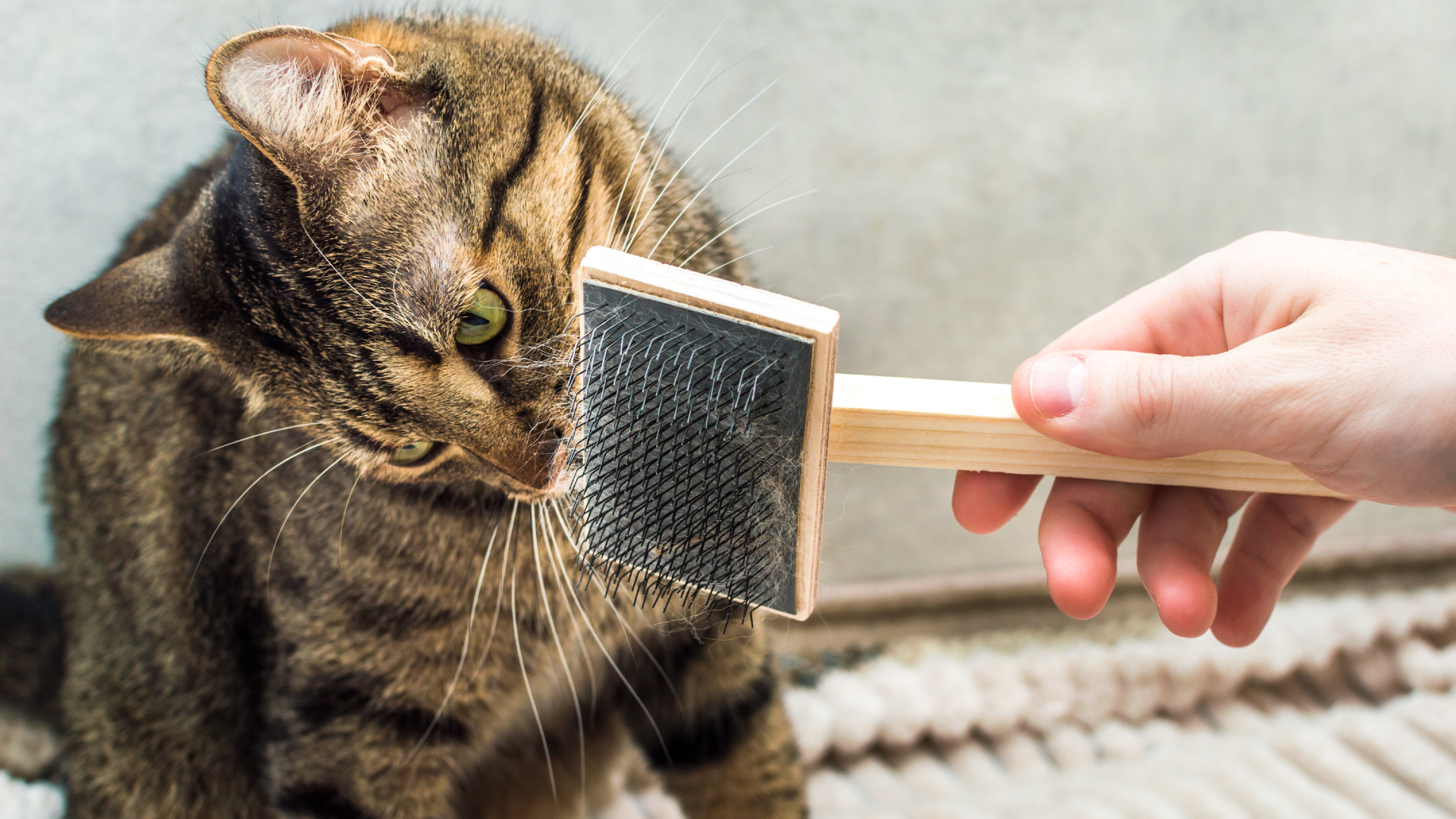
Why do cats and dogs shed?
Shedding fur is useful for cats and dogs. Here's why they do it.

Cats and dogs enrich their owners' lives, but even the most avid fans of these furry friends may not love all the hair they can shed. But shedding must serve the animals somehow, right? So why do they make fur if they are only going to shed it later? And are there times when shedding signifies a health problem?
Shedding is a regular part of life for animals with hair, and not a waste of effort. Normally, shedding helps to remove dead hair and release natural oils in the skin, according to animal health company Zoetis. If dead hair does not get removed, skin irritation can result.
In addition, cats and dogs often seasonally undergo molting, or heavy shedding, about twice a year to help them control their body temperature, veterinarian Angela Martin, co-founder of Island Veterinary Group in Huntington Station, New York, told Live Science. This usually happens in the spring and the fall; spring shedding helps pets lose their heavy winter coats, whereas fall shedding helps them prepare to grow winter coats, Zoetis noted.
This cycle of shedding may change depending on the amount of time a pet spends inside versus outside. Indoor pets are exposed to air conditioning in the summer and heating in the winter, as well as artificial lighting. This may confuse their internal clocks, which can result in relatively constant shedding across the year, according to Zoetis.
Related: Fur, wool, hair: What's the difference?
Shedding "is also a defense mechanism," Martin said. "If a bear is chasing the dog or cat and grabs the animal but comes away with a mouthful of fur, that dog or cat goes on to live another day.
There are other reasons cats and dogs shed. One is stress: "You have probably noticed this at the vet's office," Martin said. Other common causes of shedding include parasites, such as fleas and mites; endocrine diseases, such as diabetes and thyroid disorders; poor nutrition; certain medications; and excessive grooming, she said.
Sign up for the Live Science daily newsletter now
Get the world’s most fascinating discoveries delivered straight to your inbox.
Signs of unhealthy shedding include a thin coat or bald patches, Martin said. "When shedding accompanies itch, odor, inflammation of the skin, crusting of the skin, darkening of the skin, or gastrointestinal signs, allergies with secondary skin infections are often to blame," she said.
If a pet is losing hair while experiencing weight changes or other systemic symptoms, endocrine conditions may be a more likely explanation, Martin said. Immune system-linked conditions or cancer are less common explanations but are also possible, she said.
Some breeds of pets shed more than others. When it comes to cats, Maine coons, Persians and Ragdolls are known to shed a lot, Zoetis noted. In contrast, the sphynx, Siberian, Bengal, Cornish rex, Siamese and Bombay cat breeds shed the least, according to BondVet in New York. When it comes to dogs, Labrador retrievers, Newfoundlands and Pekingese tend to shed a lot, whereas dachshunds, poodles and border terriers seem almost shed-free, according to the American Kennel Club.
It’s a common misconception that shedding in dogs depends on their coat length, according to pet food company Hill’s. Similarly, in cats, American shorthair cats are among the biggest shedders, pet-sitting company Rover noted. There is no specific reason why one breed might shed more than another — some pets might be prolific shedders simply because of their natural genetic makeup, according to The Village Vets, an animal hospital network in Atlanta.
Regularly brushing or combing a pet can reduce the amount of hair they shed, according to the American Society for the Prevention of Cruelty to Animals. This can also help remove dead skin flakes and stimulate blood circulation, thus improving the overall condition of their skin.











